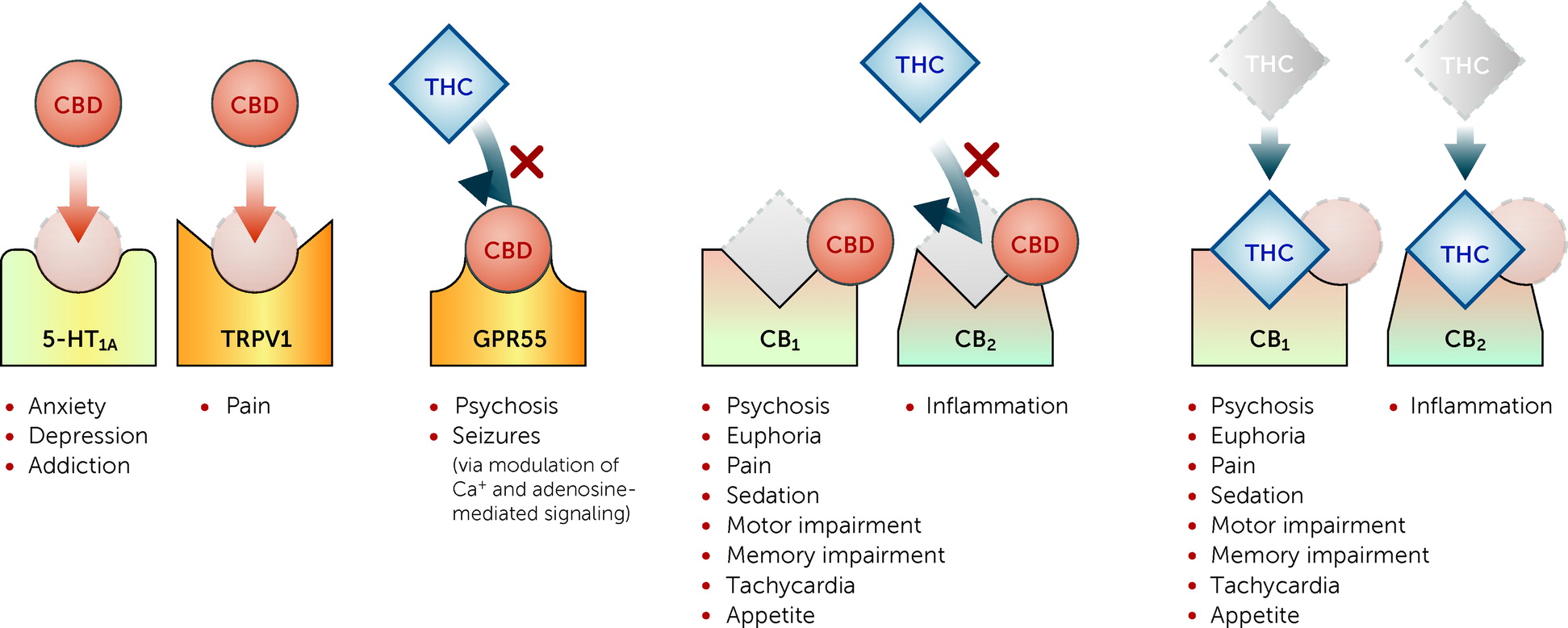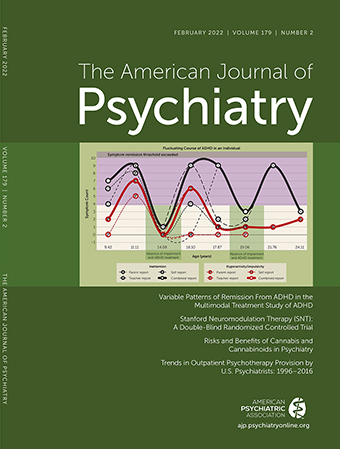Risks and Benefits of Cannabis and Cannabinoids in Psychiatry
Abstract
Objective:
Methods:
Results:
Conclusions:
CANNABINOID PHARMACOLOGY

| Receptor | Amount Required to Induce Action by CBD |
|---|---|
| CB1 | 4.3–27.5 µM |
| CB2 | 1–10 µM |
| 5-HT1A | >10 µM |
| TRPV1 | 1–10 µM |
| GPR55 | <1 µM |
CONTEMPORARY CANNABIS ISSUES
Epidemiology
Acute Effects
Chronic Effects
Indirect Effects
APPROVED AND POTENTIAL THERAPEUTIC USES
| Cannabinoid and Indication | Year Approved |
|---|---|
| Dronabinol | |
| Chemotherapy-induced nausea and vomiting | 1985 |
| Appetite stimulation in wasting conditions (e.g., HIV infection) | 1992 |
| Nabilone | |
| Chemotherapy-induced nausea and vomiting | 1985 |
| Cannabidiol | |
| Seizures associated with Dravet syndrome and Lennox-Gastaut syndrome | 2018 |
| Seizures associated with tuberous sclerosis complex | 2020 |
Cannabinoids for the Treatment of Psychiatric Disorders
Cannabinoids for the Treatment of Substance Use Disorders
CBD
GUIDANCE FOR PSYCHIATRIC CLINICIANS
FUTURE RESEARCH DIRECTIONS
THE FUTURE OF CANNABINOIDS: CAUTIOUS OPTIMISM
References
Information & Authors
Information
Published In
History
Keywords
Authors
Competing Interests
Funding Information
Metrics & Citations
Metrics
Citations
Export Citations
If you have the appropriate software installed, you can download article citation data to the citation manager of your choice. Simply select your manager software from the list below and click Download.
For more information or tips please see 'Downloading to a citation manager' in the Help menu.
View Options
View options
PDF/EPUB
View PDF/EPUBLogin options
Already a subscriber? Access your subscription through your login credentials or your institution for full access to this article.
Personal login Institutional Login Open Athens loginNot a subscriber?
PsychiatryOnline subscription options offer access to the DSM-5-TR® library, books, journals, CME, and patient resources. This all-in-one virtual library provides psychiatrists and mental health professionals with key resources for diagnosis, treatment, research, and professional development.
Need more help? PsychiatryOnline Customer Service may be reached by emailing [email protected] or by calling 800-368-5777 (in the U.S.) or 703-907-7322 (outside the U.S.).

